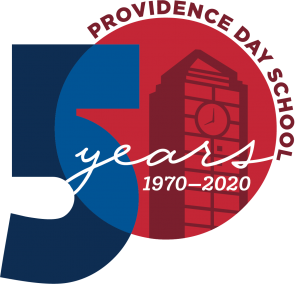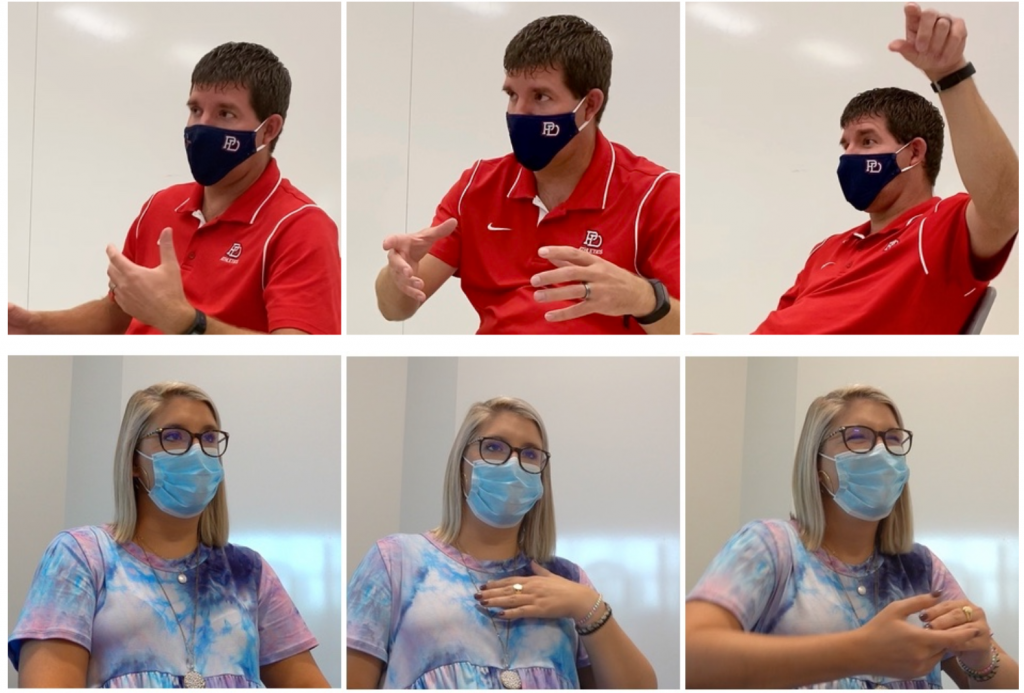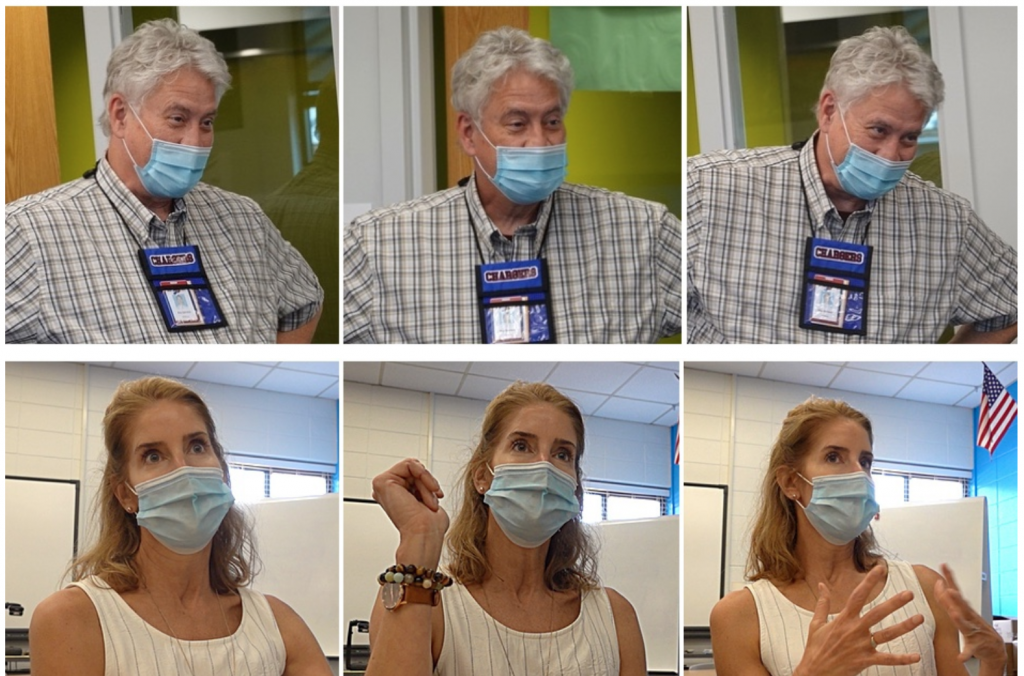By Matt Spence, Providence Day School
Providence Day School students returned to campus in August with new safety precautions in place. In Middle and Upper School, students alternate days of remote learning with days on campus, and some students are fully remote. Matt Spence, an English teacher at Providence Day School for 24 years, sought out his colleagues to tell the story of what it’s been like to teach amid the COVID-19 pandemic of 2020. His full-length story is available here.
With each passing day, the people on the campus of Providence Day seem a bit more comfortable with the policies and procedures that have been put in place to keep everyone safe from the novel coronavirus. Masks can be uncomfortable and sweaty, but they’re not all that bad. Remembering which doors are exit-only and which staircases are up-only took some time, but it’s mostly instinct now. For many, not talking during a meal has been decidedly challenging, but most people are adjusting.
It’s different, and we all yearn to return to regular school, but it’s okay, and the new systems seem to be working.
I can only speak for myself, so I reached out to some colleagues to see what their thoughts were.
Josh Springer: PE and Health teacher, 14 years
During the months of remote learning last spring, Springer said that he missed making connections with his students on a daily basis, and said that while the current hybrid schedule of the Middle and Upper Schools isn’t ideal, it’s working.
“As a teacher, there’s some nerves about ‘How do we do it all? And, how do we do it all to the best of our ability, and how do I make sure Matt has the best experience in front of me in class, and how do I make sure Kevin has the best experience at home, who’s alternating, and how do I make sure that Randy has the best experience who’s 100 percent remote?’”
Teaching PE classes has been particularly challenging, and it has required Springer and his department colleagues to be even clearer in their objectives for each unit. And, he admits, “We all recognize that there’s things we can’t do.” For example, there can’t be any team play.
However, Springer considers himself a “glass half-full guy,” so he focuses on what he can do: if the students who are on campus with him can’t play a game, they can practice the skills needed for it. If students are at home, he can assign videos for them to watch so they can learn the rules of the game and see how it’s played before completing a workout.
Emily Young: World History teacher, six years
Her new role as a Learning Specialist required Young to be on campus for a large portion of the summer, so she was already accustomed to constantly wearing a mask, making sure she maintained at least six feet between herself and other people, and repeatedly washing and sanitizing her hands. So, she didn’t have the same learning curve as other faculty did when school started up again.
However, Young says there were still a lot of unknown factors that concerned her such as not knowing where the students would sit in her classroom, how to help them with the rotating hybrid schedule, and how to plan lessons for a semester in which nothing was certain. Still, she was eager to start working with students in person again: “This is my job, and this is what I love to do, so for me, [returning to campus] was kind of a no-brainer.”
Young says that she is concerned about all of the PD faculty and staff: “Our focus has to be on the kids, and it is, but sometimes we forget about ourselves.”
Roy Garrison: World History and AP European History, 38 years
“Usually by this time of the year, I’ve learned the names of my students, and we’re all in a rhythm, but I don’t feel like that this time around,” Garrison says. He adds that he feels socially isolated this year because the times when he typically meets with colleagues, such as break, lunch, and after school, are dramatically different now.
Technology is also an occasional frustration for him. Garrison is quick to say that the problem is with him because he is not a digital native. However, he does feel like he’s improving: “I am more tech savvy – although I’m in that dangerous place where I know just enough to get it wrong,” he says with a grin.
Garrison says that he misses the informal moments that are an essential part of school – talking to students in the hall, asking them how their day is going, or doing some “informal coaching” with a student or two before class. He summarizes his experience so far this year like this:
“I feel a little bit like I’m in a foreign land, and fortunately, I speak some of the language. But, there are lots more barriers in the way of me connecting [with students] than there were before, and trying to overcome those is a challenge.”
Leigh Cook: Fourth Grade, 22 years
“As cliché as it sounds, Providence Day has been home to us, and we wanted to be back,” Cook says of herself and two PD daughters.
Of course, she has had to make significant changes to how she approaches her job and her students. “I’m a really affectionate teacher, and [I realized] ‘Oh my gosh, I can’t hug my kids!'” In addition to maintaining distance, she has also had to make changes to her classroom layout and the way her students work in groups.
Cook has taken the opportunity to bring her class outside as often possible. Each student brings a towel to school every day to spread on the grass outside; that way Cook and her class can enjoy the fresh air while she teaches them reading and math. Although the first weeks were a bit confusing, Cook says that “the kids are now in a nice rhythm,” and “have handled it all really well, and we’re all just glad to be back in school….
“Is it a challenge? Yes. Is it the best scenario? No. But we can do it together.”
Learn more about Providence Day School and its dedicated faculty at www.providenceday.org. Virtual Admissions Open House this week is on November 8th at 2 p.m. for rising grades TK-12.

5800 Sardis Road
Charlotte, NC 28270
704-887-6000
Website | Facebook | Instagram | Twitter





